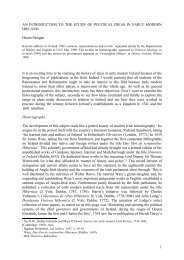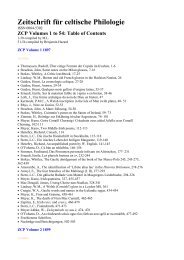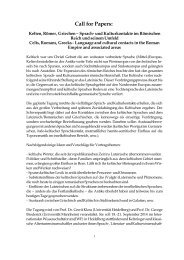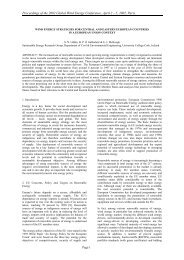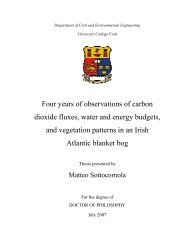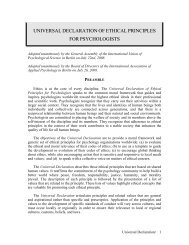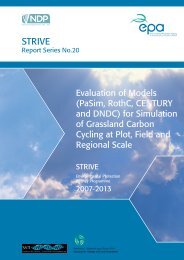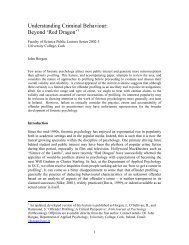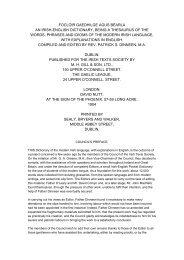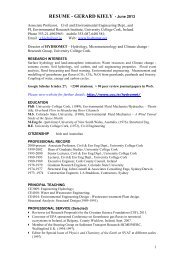PhD Thesis, 2010 - University College Cork
PhD Thesis, 2010 - University College Cork
PhD Thesis, 2010 - University College Cork
You also want an ePaper? Increase the reach of your titles
YUMPU automatically turns print PDFs into web optimized ePapers that Google loves.
Literature review<br />
NH 3 → NH 2 OH → NO 2 − → NO 3<br />
−<br />
(2.1)<br />
NO 3 − → NO 2 − → NO → N 2 O → N 2 (2.2)<br />
Each of the steps relies on the catalytic properties of certain enzymes: relevant<br />
reductaces in case of the denitrification and ammonia monooxygenase and relevant<br />
oxydoreductaces during nitrification. The initial step of nitrification (oxidation of the<br />
ammonia to hydroxylamine) requires the presence of oxygen (O 2 ) and free electrons to<br />
reduce oxygen to water. These electrons can be obtain during the second step<br />
(hydroxylamine oxidation) forming a positive feedback in the chain. Nitrous oxide is<br />
thought to be produced as a result of anabiotic transformation (chemodenitrification)<br />
from hydroxylamine or nitrite.<br />
A number of other processes have been identified as possible source of N 2 O:<br />
nitrifier denitrification is a phenomenon in which ammonia is oxidised to nitrite (NO − 2 )<br />
which in turn reduces to molecular nitrogen (N 2 ). As can be seen from the Equation<br />
2.3, ammonia oxidation corresponds to the part of the nitrification processes and the<br />
reduction phase of this process is similar to part of the denitrification processes, hence<br />
the name.<br />
NH 3 → NH 2 OH → NO 2 − → NO → N 2 O → N 2 (2.3)<br />
All previously described pathways of N transformation are most commonly<br />
performed by autotrophic bacteria. Some heterotrophic bacteria, however, are able to<br />
carry out the nitrification (heterotrophic nitrification) and denitrification under aerobic<br />
conditions. As the nature of these organisms imply they prefer carbon-rich<br />
environments.<br />
6



